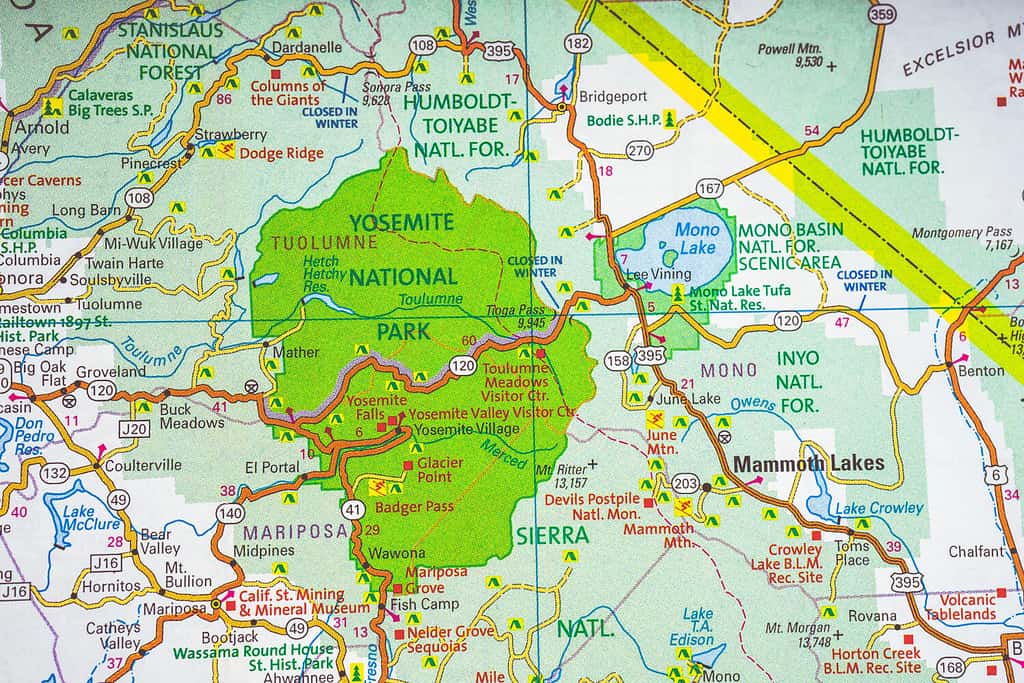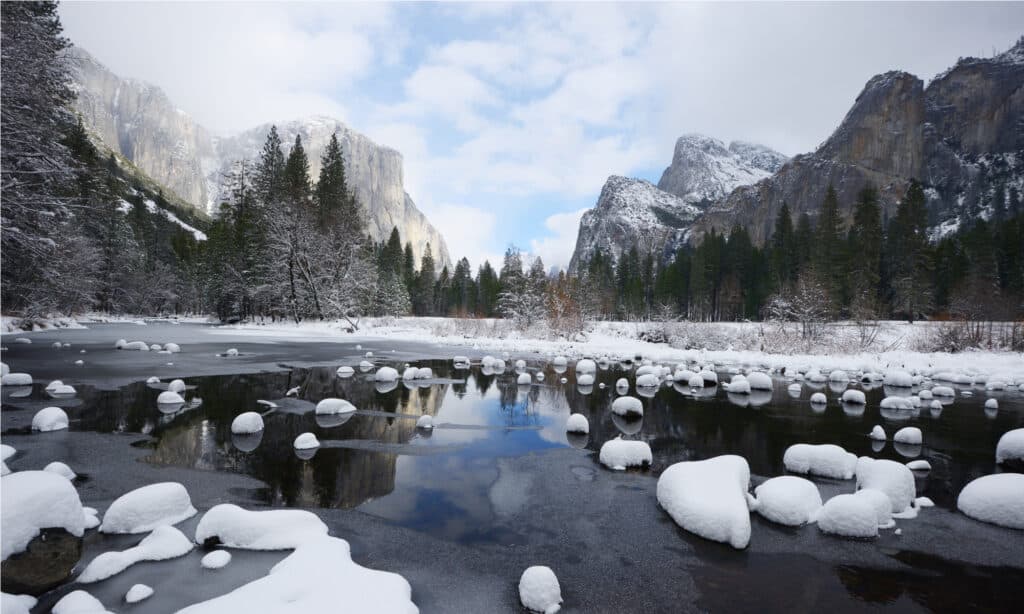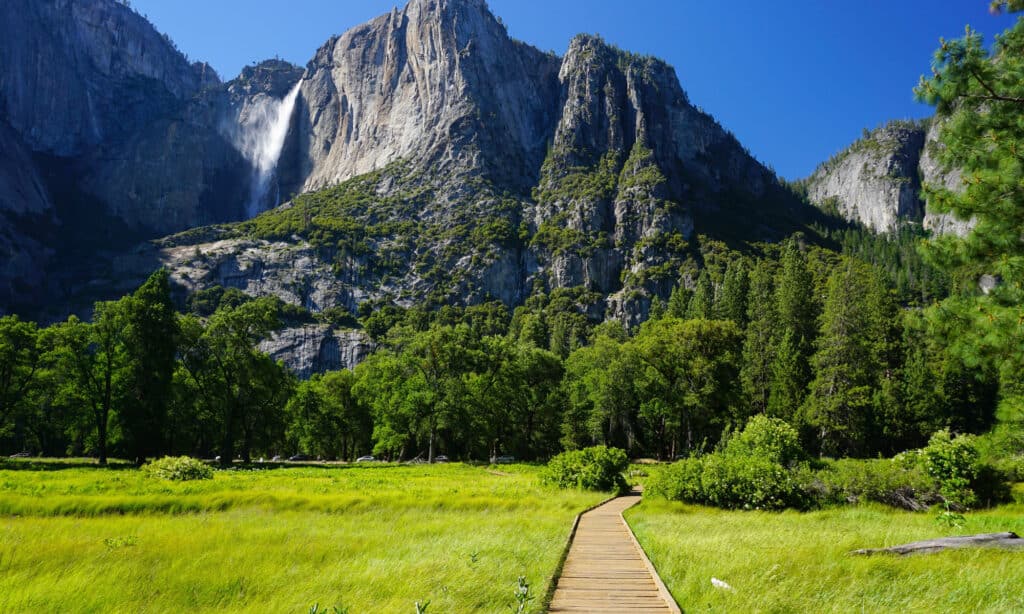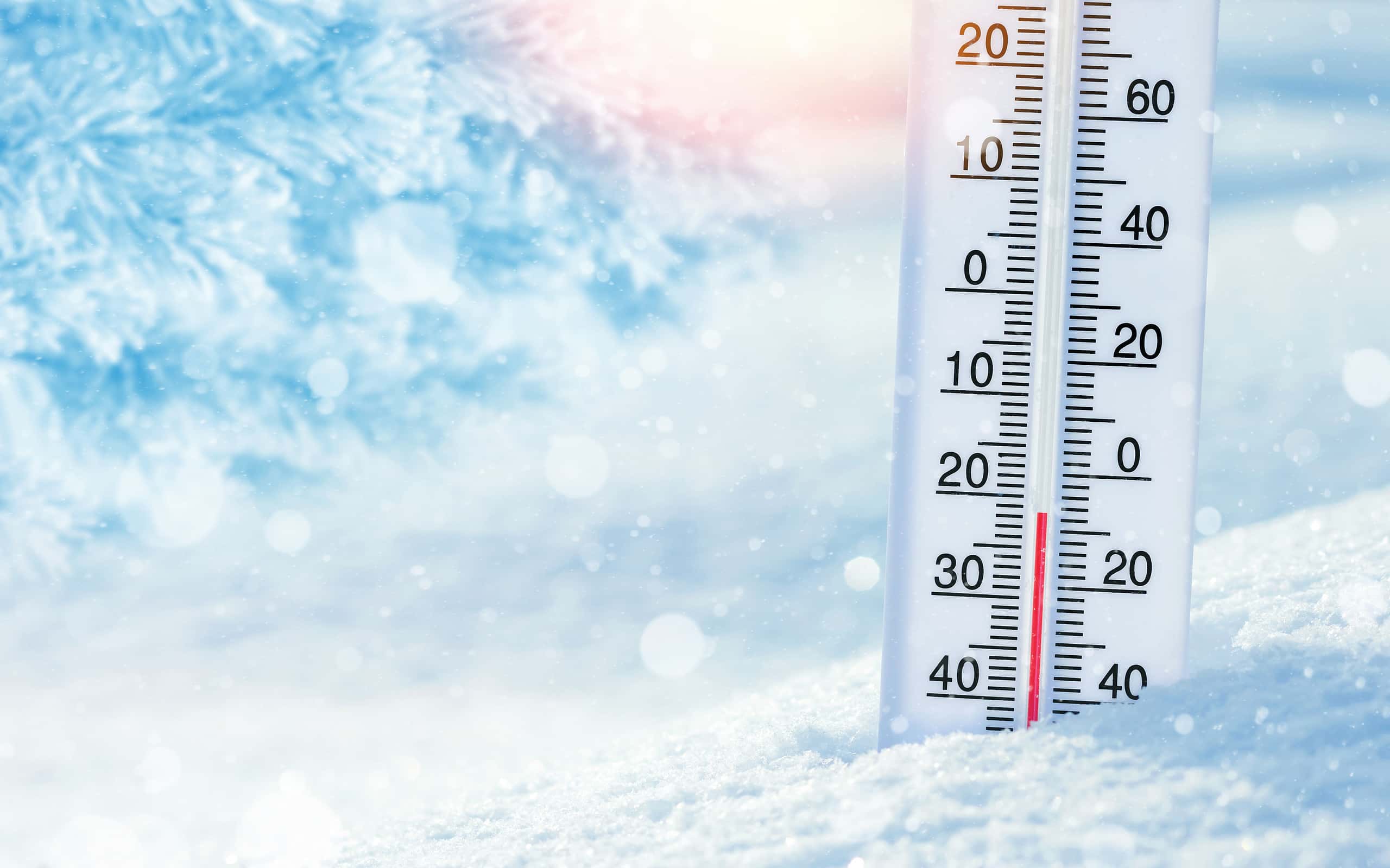Yosemite’s granite cliffs, towering peaks, immense waterfalls, and spectacular natural scenery take on a unique magic in the quiet of winter. With more than 75 percent of Yosemite National Park’s nearly five million visitors descending on the park during the six months the area is free of snow, visitors in the remaining part of the year get a special treat.
Visiting Yosemite in the winter can be tricky, however. The National Park Service (NPS) closes several of the main roads, campgrounds, and services in the park. It’s important to plan ahead before visiting the area during winter months. Knowing the peak timing and average amounts of snow in Yosemite will help you plan.
Where Is Yosemite?

Snow in Yosemite generally stays put longer in the higher elevations of the park such as Tuolumne Meadows.
©Alexander Lukatskiy/Shutterstock.com
Spanning 1,200 square miles, Yosemite National Park is located about 175 miles east of San Francisco in California’s Sierra Nevada Mountains. Designated a World Heritage Site in 1984, the park boasts a dynamic variety of natural areas to explore.
Two rivers, the Tuolumne and Merced, begin in the park and wind their way west into California’s Central Valley. Granite cliffs beckon climbers from the wide valley. Towering waterfalls mesmerize tourists. Horsetail Falls plummets over the crest of Yosemite’s most notorious cliff, El Capitan. This extraordinary waterfall appears to catch fire when it is backlit at just the right angle by sunset.
Tuolumne Meadows, one of the largest high-elevation meadows in the Sierra Nevadas, delights tourists at an elevation of 8,600 feet. Yosemite’s borders contain giant sequoia groves and mountain peaks as high as 13,114 feet at the summit of Mount Lyell.
Witness the spectacle of Horsetail Falls appearing to turn to flame in this Yosemite National Park video!
Snow in Yosemite

Yosemite National Park is covered in snow from November through May.
©saraporn/Shutterstock.com
If you plan to visit Yosemite between October and May, expect snow. The park receives 95 percent of its precipitation between those eight months, according to NPS. More than 75 percent of that moisture appears between November and March. That precipitation will be in the form of snow for any elevation in Yosemite above 6,000 feet.
The first snows in the fall are generally light and melt within hours or days. By mid-November, however, the ground is cold enough for snow to start accumulating. In the higher elevations of Yosemite, snow often falls as early as September or October. Once the ground is cold enough for the snow to accumulate, snowpack all over the park increases and reaches maximum depth in mid-March.
Check out a map of the different areas of the park.
Yosemite Valley
While most of the park is covered in snow from about November through May, Yosemite Valley can get rain or snow in any given winter storm. At an elevation of 4,000 feet, the valley is accessible by car all year. Average high temperatures in winter hit about 54°F. Average lows can drop to around 28°F.
Yosemite Valley sees an average of 36 inches of snow per year, often accumulating up to two feet on the ground. Peak snowfall hits between November and March. With an average of 7 inches of precipitation, you are likely to encounter the most snow in January. February is a close second with an average of around 6.5 inches.
View maps showing how Yosemite National Park’s snow cover melts throughout a spring season.

Yosemite Valley sits in the lower elevations of the park at about 4,000 feet.
©Alxcrs/Shutterstock.com
Tuolumne Meadows
During the summer months, Tuolumne Meadows is a favorite of tourists visiting the park. Sitting high above Yosemite Valley at 8,600 feet elevation, these pristine meadows are surrounded by granite peaks and domes left by ancient glaciers. The Tuolumne River, fed by spring snowmelt, rushes through its meadow channel, nourishing the symphony of colors erupting from the sun-warmed earth.
In the winter, however, the crowds are nowhere to be seen or heard. The chatter of mountain chickadees and American robins replaces the hum of busy humans. Even the rush of the river slows under the grip of snow and ice. Tuolumne Meadows is closed to car traffic in the winter as the road that leads to the area, Tioga Road, is shut down sometime in November until late spring. Hikers can continue to access the area in the snow, although conditions can be severe and dangerous if people are not properly equipped and trained.
Tuolumne Meadows sees most of its snow from October through March. According to historical weather data, December provides the most snow with an average of 8.2 inches. January follows closely behind with 7.9 inches. The area receives 39 inches of precipitation annually, mostly in the form of snow.
Check NPS updates for weather conditions in Tuolumne Meadows.
Badger Pass
Badger Pass Ski Area is one of Yosemite’s most popular winter destinations. Open from December through March and accessible by car or shuttle, the resort’s 89 acres run from a starting elevation of about 7,200 feet up to 8,000 feet. At these elevations, snow is guaranteed in the winter.
According to OnTheSnow.com, January and February are the area’s peak months for snowfall. Each year begins with a bang as January brings an average of 17 inches of snow. February doesn’t disappoint by bringing another 12 inches on average. Annually the resort receives about 41 inches of snowfall with the snowpack reaching its peak depth in March at 18 inches average base depth.

Badger Pass is a popular ski resort within Yellowstone National Park.
©iStock.com/anyaberkut
Record Snow in Yellowstone
The winter of 2022-23 broke a five-year drought and a 54-year record when 40 inches of snow accumulated in Yosemite Valley. The previous record was set at 36 inches on February 28, 1969. Higher elevations in the park, such as Tuolumne Meadows, were buried under 15 feet of snow! By March 1, 2023, the world-famous national park closed under the weight of so much snow. Tioga Road was not able to re-open until late July of that year thanks to the record snow.
Thank you for reading! Have some feedback for us? Contact the AZ Animals editorial team.








